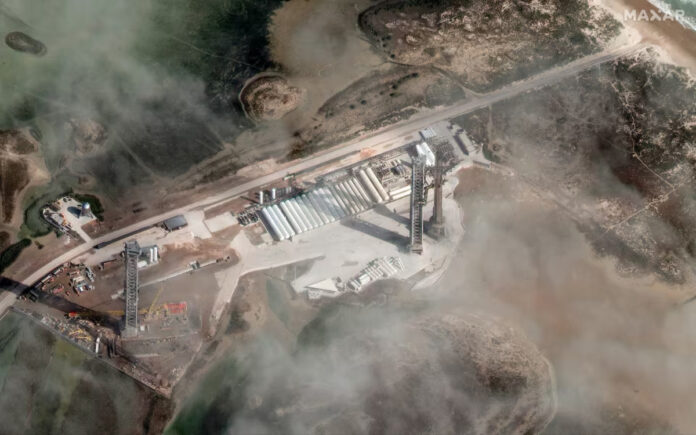Austin: A SpaceX Starship rocket disintegrated minutes after launching from Texas on Thursday, forcing airline flights over the Gulf of Mexico to divert and delaying others due to falling debris. The incident marks a significant setback for Elon Musk’s flagship rocket program.
The Starship, carrying a test payload of mock satellites but no crew, launched from SpaceX’s South Texas facility at 5:38 p.m. EST (2238 GMT). Eight minutes into its flight, SpaceX mission control lost contact with the rocket, leading to its breakup.
“We did lose all communications with the ship — that is essentially telling us we had an anomaly with the upper stage,” SpaceX Communications Manager Dan Huot confirmed. Minutes later, the rocket’s destruction was announced.
“NASA has this phrase that they like: ‘Failure is not an option.’ But failure has to be an option in art and in exploration, because it’s a leap of faith. And no important endeavor that required innovation was done without risk. You have to be willing to take those risks. So,… pic.twitter.com/eJYfcZRaft
— James (@Aloha_Aviator) January 16, 2025
Visual and Flight Disruptions
International news agency Reuters reported that captured footage showed orange balls of light streaking across the sky over Port-au-Prince, Haiti, with smoke trails visible behind them. FlightRadar24 reported dozens of commercial flights were diverted or rerouted to avoid potential debris. Departures from Miami and Fort Lauderdale airports were delayed by approximately 45 minutes.
The Federal Aviation Administration (FAA) confirmed it temporarily slowed and diverted planes in the debris-affected area. Normal operations resumed shortly after the debris cleared. The FAA often closes airspace for launches, but in this instance, it created a “debris response area” to address the anomaly.
Musk Responds to Setback
Elon Musk shared a video of the debris field on X, writing, “Success is uncertain, but entertainment is guaranteed!” The failure comes shortly after Blue Origin, Jeff Bezos’ space company, successfully launched its New Glenn rocket into orbit.
SpaceX described the Starship’s upper stage as a “new generation ship with significant upgrades,” standing 2 meters taller than its predecessors. It was intended to make a controlled splashdown in the Indian Ocean about an hour after launch. Musk attributed the failure to an internal liquid oxygen leak that built up pressure, causing the rocket’s breakup.
Regulatory and Operational Implications
The FAA is expected to open a mishap investigation, potentially grounding Starship for an extended period. The investigation will assess whether any debris fell on populated areas or outside the designated hazard zone. This could delay Musk’s plans to conduct 12 Starship test flights this year, although Musk stated, “Nothing so far suggests pushing next launch past next month.”
SpaceX’s test-to-failure approach has historically included dramatic setbacks as the company explores the limits of its engineering. However, Thursday’s failure occurred during a flight phase SpaceX had successfully navigated in the past.
Also Read | Evacuees in Los Angeles Ordered to Stay Away for Another Week Amid Ongoing Wildfires
Super Heavy Booster Performance
Despite the mishap, the towering Super Heavy booster executed a successful return to its launchpad. Seven minutes after liftoff, it reignited its Raptor engines and hooked onto giant mechanical arms on the launch tower, demonstrating the reliability of this part of the system.
Also Read | North Korea Condemns US Aircraft Deployments Over Korean Peninsula
Musk’s Ongoing Criticism of the FAA
Musk has frequently criticized the FAA, accusing the agency of overreach and politically motivated decisions. He previously called for FAA Chief Mike Whitaker’s resignation after fines and launch delays affected SpaceX’s operations. Whitaker stepped down in December, and a replacement has yet to be named.
Also Read | Taiwan’s First Execution in Five Years Stirs Controversy with EU and Human Rights Advocates
The mission was the seventh Starship test since 2023 in SpaceX’s multibillion-dollar effort to create a rocket capable of transporting humans and cargo to Mars while deploying large satellite batches into orbit.



